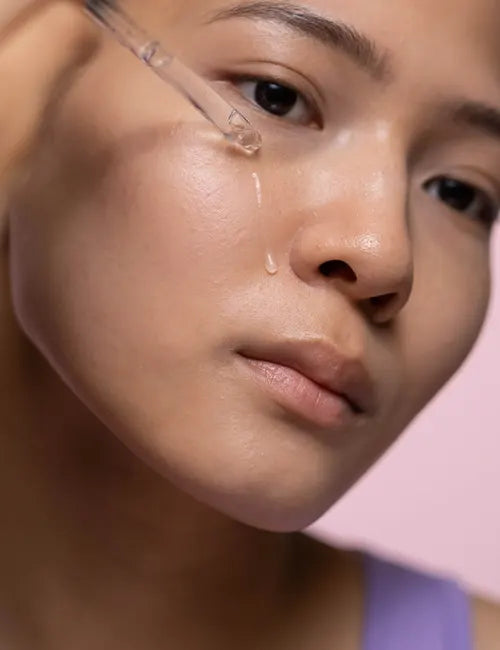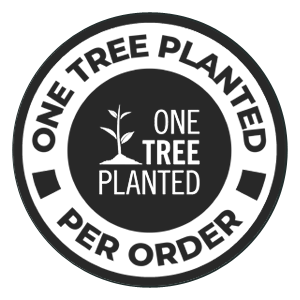The Ethical and Practical Concerns of Snail Mucin in Skincare
Manuela ValentiShare
What mucin is
Mucins, or mucus, are a highly glycosylated protein family that various animals secrete for adhesion, hydration, and lubrication.
Glycosylation is the process of covalently attaching a carbohydrate sugar (donor) to a hydroxyl group or other functional group of lipids, proteins or any other organic molecule (acceptor) through an enzymatic reaction (by glycosyl-transferases).
An ancient Ingredient
The fascination with the mucus left by snails and slugs traces back to ancient Greece. They valued the mucus for its properties in reducing inflammation and the visible signs of aging.
Comprehensive chemical composition of snail mucin
Snail mucin is rich in a variety of bioactive compounds that contribute to its effectiveness in skin care:
- Glycoproteins: These proteins play a key role in increasing collagen production and enhancing the skin's natural healing processes.
- Hyaluronic Acid: Known for its intense moisture-retention properties, it helps keep the skin hydrated and plump.
- Glycolic Acid: This alpha hydroxy acid (AHA) aids in exfoliation, removing dead skin cells and revealing brighter, younger-looking skin.
- Elastin: Contributes to the skin’s elasticity, helping it to appear firmer and more youthful.
- Proteins and Peptides: Essential for maintaining the integrity of the skin barrier and improving skin texture.
- Antimicrobial Peptides: Offer protection against bacteria and other pathogens, potentially reducing acne and skin infections.
- Enzymes: Assist in breaking down dead skin cells and aiding in skin renewal.
Unethical mucin extraction processes and ethical concerns
The conventional method for harvesting snail mucin involves placing snails in environments that cause stress to stimulate the secretion of mucin. This often involves exposing snails to salt or other chemicals, irritating them and causing them to secrete mucin as a defense mechanism.
Another method involves the application electrical stimulation. The voltage is often applied at short intervals and never exceeding 1000 volts. This induces stress on snails which requires them to be fed and hydrated prior to subsequent extraction.
Through cracking the shell of a snail, the soft body of the snail is induced to create more mucus.
No matter which method is used to extract the mucus from snails, each method equally cruel just in the name of beauty.
Such practices not only raise ethical concerns regarding animal welfare but also pose questions about the sustainability and humanity of using snail mucin for medical or cosmetic products.
Cruelty-free alternatives to snail mucin
The extraction of snail mucin involves conditions that can cause stress and harm to the snails, such as environmental stressors or mechanical stimulation to encourage mucin production. This practice raises ethical concerns regarding animal welfare.
Given the ethical implications, there is a growing demand for cruelty-free alternatives that offer similar benefits without harming animals:
- Hyaluronic Acid: Sourced from the fermentation of plants like wheat and soy, hyaluronic acid mirrors the hydrating properties of snail mucin.
- Aloe Vera: This plant extract is renowned for its soothing and healing properties, making it a perfect substitute for the reparative effects of snail mucin.
- Plant Peptides: Offering similar benefits to the glycoproteins in snail mucin, plant peptides help in skin rejuvenation and collagen stimulation.
The Dangers of Counterfeit Snail Mucin Products
With the rise in popularity of snail mucin, the market has seen an influx of counterfeit products. These products often contain impure or diluted forms of snail mucin, which may not provide the desired skincare benefits and could potentially cause adverse reactions. Consumers should be vigilant and seek products from reputable sources that provide clear and honest information about their ingredients.
While snail mucin has proven skincare benefits, the ethical issues surrounding its extraction cannot be overlooked. Consumers who prioritize animal welfare and environmental sustainability are increasingly turning to plant-based alternatives that provide similar benefits without compromising ethical standards. As awareness continues to grow, the shift towards cruelty-free alternatives is likely to gain further momentum, encouraging more brands to invest in ethical ingredient sourcing and product development.








